Canadian Liberals have long celebrated this country’s history of “peacekeeping” as one characterized by upholding a benign and humane alternative to war. But in reality, the difference between war and “peacekeeping” is hazy.
‘Hard Power’
During the 2015 federal election, Prime Minister Justin Trudeau promised to recommit Canada to “peacekeeping” and to make this country a “compassionate and constructive voice in the world.”
In response, various media outlets eagerly recalled the history of Canada’s post-war peacekeeping operations as one of “relatively benign observer missions” marked by consent, impartiality and minimum use of force.
But, since 2016, the Trudeau Liberals have committed to expanding Canada’s use of force abroad. The government’s 2017 white paper, titled “Strong, Secure, Engaged,” pledged to build a military capable of boosting “combat” and “peacekeeping” forces alike.
To this end, the 2022 budget proposed to bolster the Canadian army’s “hard power” and “readiness to fight.”
This combative rhetoric reflects much of the real history of Canadian “peacekeeping.”
In 2016, David J. Bercuson, a former member of the Ministry of National Defence’s Monitoring Committee, told the Senate that distinguishing between “peacekeeping” and open combat largely reflected the "endless pursuit of enlarging small differences.”
Canada’s peacekeeping efforts, he said, were “done to serve the interests of NATO, and not because we were placing our military at the service of humankind.” Overall he argued, these operations were mostly “aimed at waging war” against geo-political adversaries and their allies.
In this first article, we examine the role of Canadian peacekeepers in aiding imperial conquest during the early Cold War period.
The ‘police action’ in Korea
The prehistory of peacekeeping began with Canadian officers aiding the partition of Palestine in 1947, and with Canada's supervision of elections in the U.S.-occupied portion of Korea.
Canadian personnel joined the panel of the United Nations Commission on Korea from 1948-1950. Meanwhile, the country slid deeper into war, with both North and South Korean forces crossing the U.S.-initiated partition line.
On June 26, as southern forces captured the North Korean town of Haeju, U.S.-backed dictator Syngman Rhee reminded the New York Times he was ready for a full-scale war. By July, Prime Minister Louis St. Laurent had pledged significant support “if Canada is asked.”
The U.S. presented a resolution before the UN Security Council that condemned the North’s “aggression,” and U.S. President Harry Truman ordered the U.S. Navy and Airforce into combat on June 27.
The UN approved U.S.-led military intervention, backed by Britain and France, on July 7. Canada’s external affairs minister, Lester Pearson, promised to join the military force on July 28.
St. Laurent characterized the incredibly bloody U.S.-led invasion against the Korean People’s Army (KPA) and supporting Chinese soldiers as a "police action intended to prevent war.”
Canada’s involvement, he explained, would consist of a “brigade … known as the Canadian Army Special Force, and it will be specially trained and equipped to be available for use in carrying out Canada’s obligations under the United Nations Charter.”
Today, the Canadian government claims the UN effort was part of a mission for “global peace and security,” and states:
“The Korean War marked a new stage in Canada’s development as a nation. Since the end of the war, Canada has contributed to peacekeeping operations around the world in an effort to promote international freedom and maintain world peace.”
However, in 1951, a Canadian representative to the UN outlined the government’s directive slightly differently: “Though we have sympathy for those who seek self-government, we also have a strong interest in preventing the development of trouble-spots that would endanger western defence.”
On Feb. 15, 1951, the Canadian Press announced that “Canada’s fighting men in Korea – Princess Patricia’s Canadian Light Infantry – are headed into the battle zone.” All told, Canada’s contribution to this “police action” involved 21,940 soldiers, 19 fighter pilots and eight warships, including three destroyers.
According to historian John Price, Canadian and other UN forces likely committed a greater number of war crimes in Korea than in “anything seen during the fighting in Europe and WWII.”
In his memoir, Canadian diplomat Arthur Menzies recalled a conversation with U.S. General Douglas MacArthur about both sides “liquidating enemies” and “potential enemies.” This was the strategy overwhelmingly pursued on the ground.
Canadian Col. Charles Perry Stacey wrote that while the UN forces were outnumbered, they won with superior firepower, as the Korean and Chinese forces were “never as strong … in artillery” and had “very little armour.”
On Feb. 24, 1951, CP reported, the UN forces launched a “frontal assault,” scaling hills in Korea’s Cheongsong County region to get “within grenade range” of Chinese troops, who were fighting on the side of the KPA, ahead of a “massive artillery tank, air and barrage.”
U.S. artillery “pounded” Cheorwon County on Apr. 10, and, a month later, “unremitting Canadian tenacity” and “hours” of shelling thwarted the “long-expected Chinese spring offensive.”
“The Chinese are tough,” recalled Canadian Private Albert Miller in November 1951. “They’ve got all kinds of guts. They’re well dug in. You have to burn ‘em and kill ‘em before you can move ‘em.”
After a few setbacks, the Canadian forces ensured that “the Chinese paid heavily” with a “steady rain of bombs” for their past raids, CP reported in April, 1952.
On Aug. 22, 1950, The Globe observed that five “Industry Dense” North Korean cities were “prime targets for continuing, heavy air strikes.”
The Royal Canadian Air Force (RCAF) engaged in 66 total combat missions to destroy around 20 enemy planes and key “ground targets” identified as “enemy trains and trucks.”
According to Stacey, plans to use atomic weapons were only shelved so as not to “extend the war.” All told, the UN forces dropped 635,000 tons of explosives and 32,000 tons of napalm on men, women and children.
This “police action” was the first major use of napalm in a war, hailed by an eager Globe and Mail headline that screamed: “New Flame-Thrower In Korea Burns, Suffocates Enemy.”
The 1951 article reported that near the Bukhan River:
“The flames roared 200 feet into the air,” recalled one eye witness.“A great cloud of smoke rolled over the area. No sign of the Chinese remained on the devastated patch of ground. Penetrating splashes of fiery sticky substance cause death and agony for anyone within reach. The great burst of flames also absorbs all oxygen in the air for many yards around -- suffocating other victims.”"
On July 27, 1953, Canada, as part of the UN force, helped negotiate an armistice agreement, which established Korea’s Demilitarized Zone along the Yellow Sea.
After all the bombings of the combat phase, the Canadian government claims, “7,000 Canadians served as peacekeepers in the uneasy ceasefire that followed the armistice of 1953.”
While the UN armistice marked, according to one account, “the UN take-over of the U.S. war,” Canada’s last rifle detachment remained in Korea until Apr. 6, 1955, and the last Canadian destroyer ship remained in Korean waters until September 1955. Combat-ready U.S. forces remain in Korea to this day.
An outstayed welcome in Egypt
Soon after the “police action” in Korea, then-external affairs secretary of state Lester Pearson sent Canadian troops as part of a 7,000-strong UN deployment to Egypt in 1956, nominally to enforce a ceasefire as British, French and Israeli troops withdrew from the Middle Eastern country.
This intervention has been mythologized as the birth of “the modern era of international peacekeeping,” and won Pearson the 1957 Nobel Peace Prize.
Egyptian President Gamal Abdel Nasser had nationalized the Suez Canal Company, which took revenues away from British and French businesses, to finance public works projects. This led to an Israeli invasion on Oct. 29, 1956, followed by the entry of French and British Paratroopers on Nov. 5.
On Nov. 6, 1956, The Globe and Mail reported that the aim of the UN peacekeeping operation to which Canada initially contributed 1,000 soldiers was two-fold: To prevent “any border incidents” and to block “any interference with canal operations.”
Pearson insisted in private correspondence that a new “effective military force” was needed to “replace” the two European powers, which withdrew from Egypt in December 1956.
Although UN Secretary-General Dag Hammarskjöld had appointed Canadian Gen. Tommy Burns as commander of the UN force to, as Maclean’s noted, oversee British and French withdrawal in an “orderly fashion,” the Canadian Press eagerly celebrated in 1957 “the arrival of Canada’s first fighting-type troops” in the Sinai desert.
After Nasser protested the Canadian soldiers’ presence, Pearson told Maclean’s in July 1957:
“We feel that Egypt had the right to be consulted and to agree to the entry of an international force, but having given that consent as she did, she has no right to control the Force, to order it about, to tell the Force when it shall leave.”
In May 1967, the Canadian “peacekeepers” were expelled on the eve of the Six Day War.
As late as May 19, 1967, the Globe reported that external affairs minister Paul Martin “in a last ditch effort to save the force, approached Israel with an informal proposal that the force be relocated to Israeli soil” — just over a week before Israel launched airstrikes on Egypt.
Helping Kill Patrice Lumumba
Canadian “peacekeepers” played a more direct and violent role in thwarting a former colony when they intervened in Congo.
In 1960, Canada sent 300 soldiers to Congo as part of a peacekeeping force, initially at the request of Patrice Lumumba, the country’s first elected prime minister after it won independence from Belgium. The newly elected Lumumba was grappling with an emerging civil conflict.
Soon after Lumumba’s request, however, the Canadian peacekeepers helped the country’s former colonizers and aided the ascendancy of a future puppet dictator.
In case the Canadian establishment’s underlying attitudes towards the former colony were in doubt, before Congo won independence, Canada’s trade minister A.B. Brodie had remarked that the Belgian colonizers were benevolent and wanted only to make the Congolese “healthier and more useful citizens.”
These colonial attitudes prevailed in the Canadian press and the peacekeepers’ actions.
On July 20, 1960, the Globe announced that the Canadian “paratroopers'' were sent to “restore order in the mutiny-torn African country.” The “peacekeeping” force was headed by Colonel Jean Berthiaume, a member of Canada’s Royal Infantry Corps.
The same day the Canadian force was announced, the Globe dutifully noted that the Belgian government promised UN Secretary Ralph Bunche “not to move into any new areas” unless “a grave new threat emerged to the white population.”
But, as Congo continued to slide into civil war, the Belgian army deepened its ties to future right-wing dictator Mobutu Sese Seko.
It is well known that Mobutu's allies and a Belgian execution squad assassinated Lumumba on Jan. 17, 1961. The killers dissolved Lumumba’s corpse in acid.
They also had help from a Canadian. Berthiaume, in 1990, admitted:
“I called Mobutu. I said, ‘Colonel, you have a problem, you were trying to retrieve your prisoner, Mr. Lumumba. I know where he is, and I know where he will be tomorrow. He said, what do I do? It’s simple, Colonel, with the help of the UN you have just created the core of your para commandos — we have just trained 30 of these guys — highly selected Moroccans trained as paratroopers. They all jumped — no one refused. To be on the safe side, I put our [Canadian] captain, Mario Coté, in the plane, to make sure there was no underhandedness. In any case, it’s simple, you take a Dakota [plane], send your paratroopers and arrest Lumumba in that small village — there is a runway and all that is needed. That’s all you’ll need to do, Colonel. He arrested him, like that, and I never regretted it.”
Recently, the Belgian government returned Lumumba’s gold-capped tooth – the only part of his body that remained – to Congo.
'Listening posts' in Vietnam
Berthiaume’s intelligence sharing wasn’t the only time Canadian “peacekeepers” supplied information to a conquering imperial power.
In Vietnam, Canadian army personnel served on the International Control Commission (ICC) – dubbed a “peace observation” operation that lasted from 1954 to 1972 – to supervise a ceasefire along the 17th parallel that separated North and South Vietnam.
But the “peace” body’s missions were described as “listening posts” by the Globe for good reason – Canadian soldiers admitted they used their ICC positions to aid America’s brutal invasion.
Speaking at Temple University in April 1965, then-prime minister Lester Pearson said he “supported wholeheartedly the U.S. peacekeeping and peacemaking policies in Vietnam." As well, although Pearson’s external affairs minister Paul Martin insisted the Canadians on the ICC were “not engaged in any spying or clandestine activities,” those on the commission said otherwise.
In 1967, CBC Ottawa correspondent Tim Ralfe said it was “no secret” that the Canadians on the ICC “cooperated with the Americans” and served as “U.S. spokesmen.”
In November 1969, Brigadier Donald Ketcheson, who served on the ICC from 1958-59, said he “regularly furnished the CIA with information about communist troop movements.”
Canadian Col. Lorne Rodenbush, a permanent ICC representative in Hanoi from 1967-68, recalled that his time in the city was interrupted by daily U.S. bombing raids, pushing much of the civilian population into bomb shelters.
He also recalled that he passed this valuable information along to the U.S. military as it conducted the raids.
“I had informed U.S. representatives that I encountered, be it Singapore or Kuala Lumpur or Bangkok or Vientiane, that activating the warning system had the effect of shutting down Hanoi,” Rodenbush recalled in a subsequent lecture. This explained why “Hanoi was devoid of children and the elderly,” a fact that he said proved “the tactics worked.”
Despite getting assurances from the U.S. that his villa was clearly marked so that warplanes would not strike targets in the vicinity, one bombing raid resulted in an “Indian Commission communicator being killed in my backyard,” said Rodenbush.
Still, Rodenbush reminisced, “that was the only casualty during my one year there."
That is, the only casualty besides the two million Vietnamese civilians killed as a result of the U.S. invasion.
Mitchell Thompson is a writer with PressProgress, an occasional radio producer and a researcher based in Toronto.

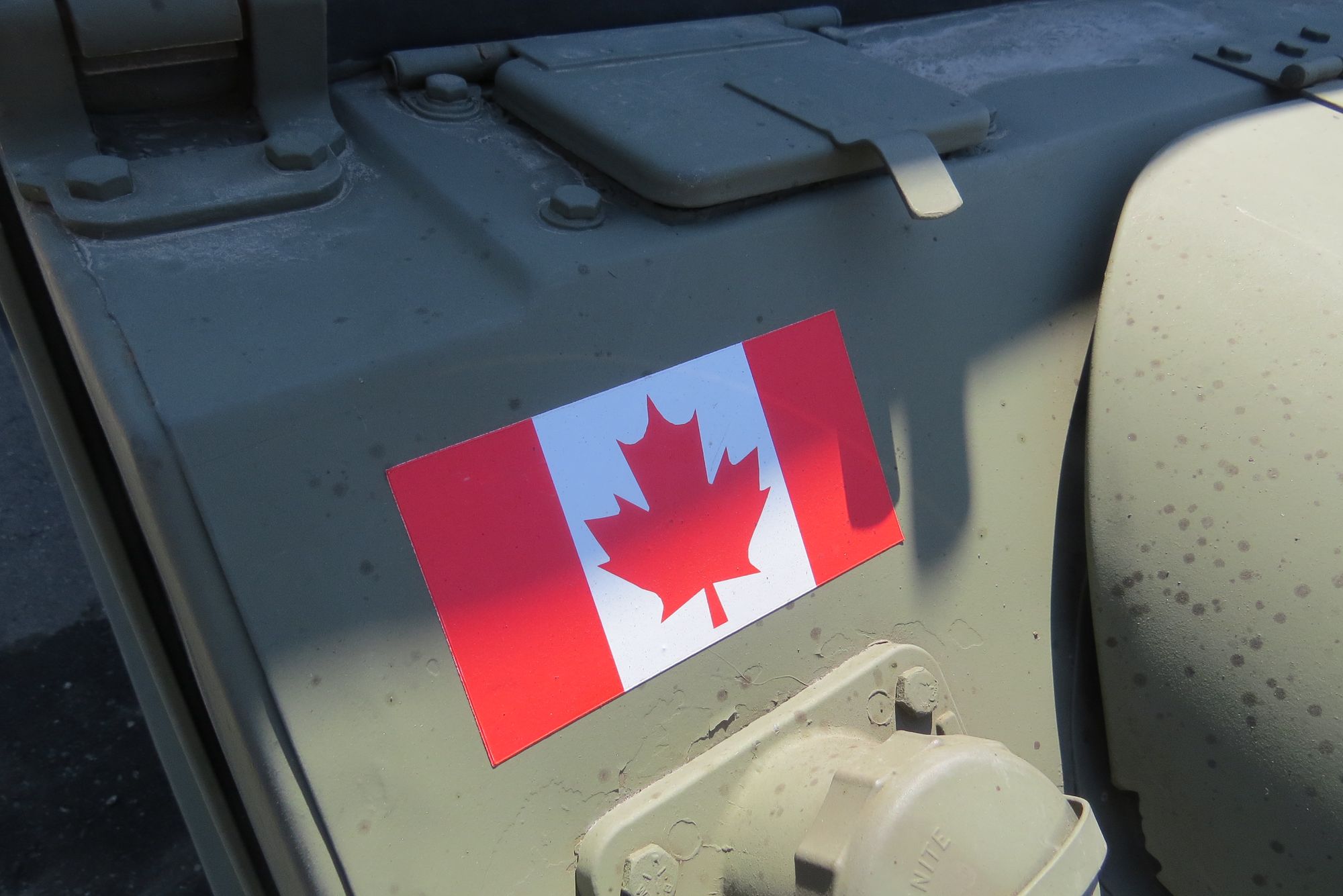
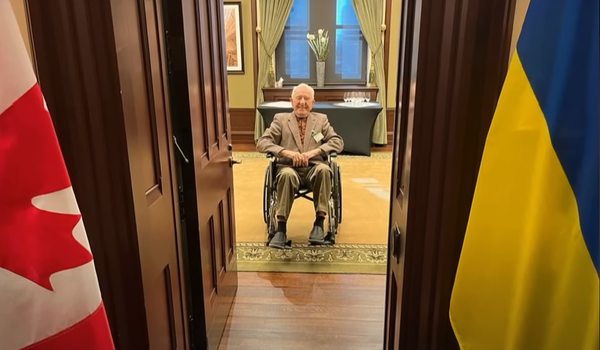
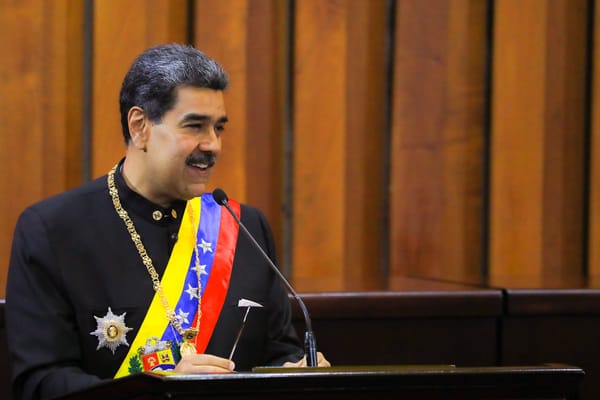
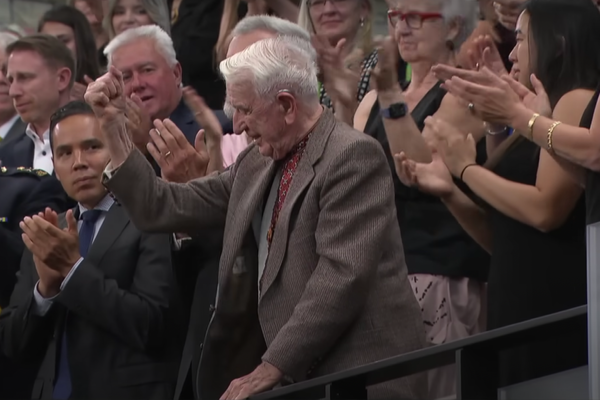
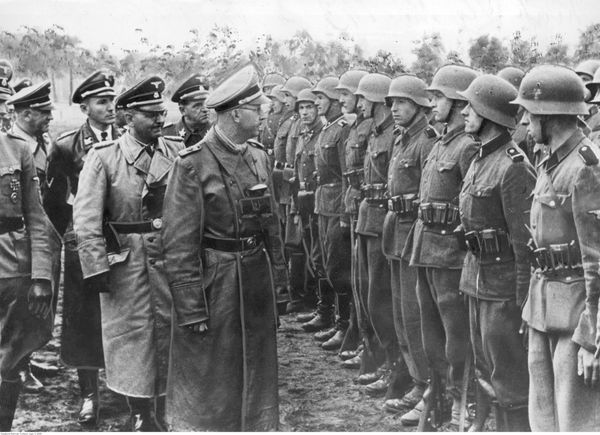
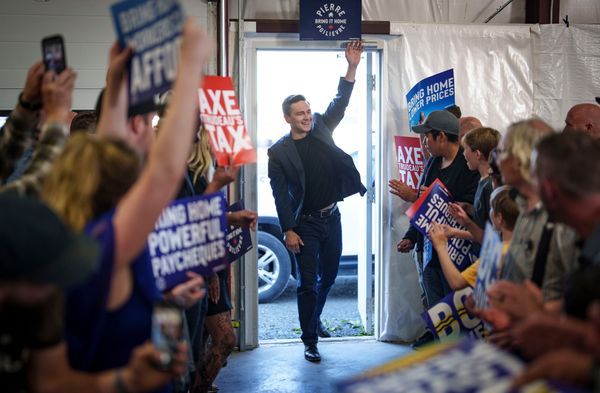
Member discussion